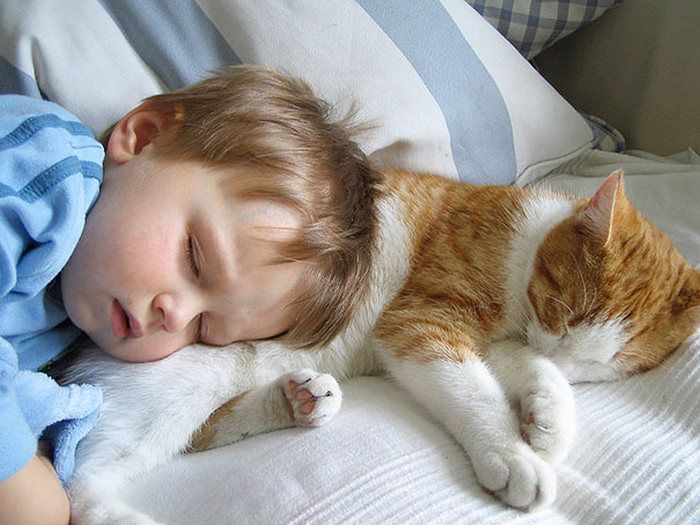|
|
Cat And The Child
|
Cats have 7 cervical vertebrae like almost all mammals, 13 thoracic vertebrae (humans have 12), 7 lumbar vertebrae (humans have 5), 3 sacral vertebrae like most mammals (humans have 5 because of their bipedal posture), and a variable number of caudal vertebrae in the tail (humans retain 3 to 5 caudal vertebrae, fused into an internal coccyx). The extra lumbar and thoracic vertebrae account for the cat's spinal mobility and flexibility. Attached to the spine are 13 ribs, the shoulder, and the pelvis. Unlike human arms, cat forelimbs are attached to the shoulder by free-floating clavicle bones, which allow them to pass their body through any space into which they can fit their heads.
Skull
The cat skull is unusual among mammals in having very large eye sockets and a powerful and specialized jaw. Within the jaw, cats have teeth adapted for killing prey and tearing meat. When it overpowers its prey, a cat delivers a lethal neck bite with its two long canine teeth, inserting them between two of the prey's vertebrae and severing its spinal cord, causing irreversible paralysis and death. Compared to other felines, domestic cats have narrowly spaced canine teeth; which is an adaptation to their preferred prey of small rodents, which have small vertebrae. The premolar and first molar together compose the carnassial pair on each side of the mouth, which efficiently shears meat into small pieces, like a pair of scissors. These are vital in feeding, since cats' small molars cannot chew food effectively.
|
|









